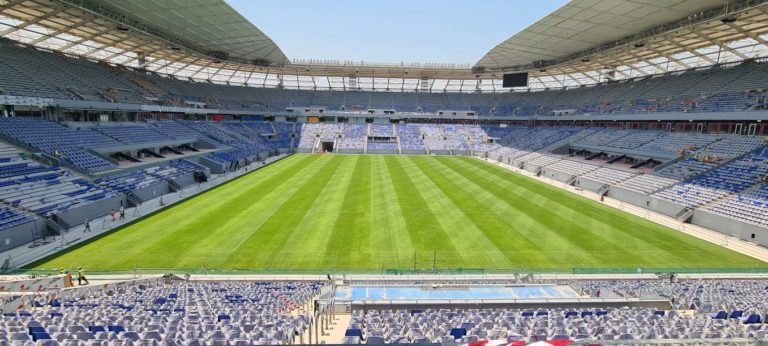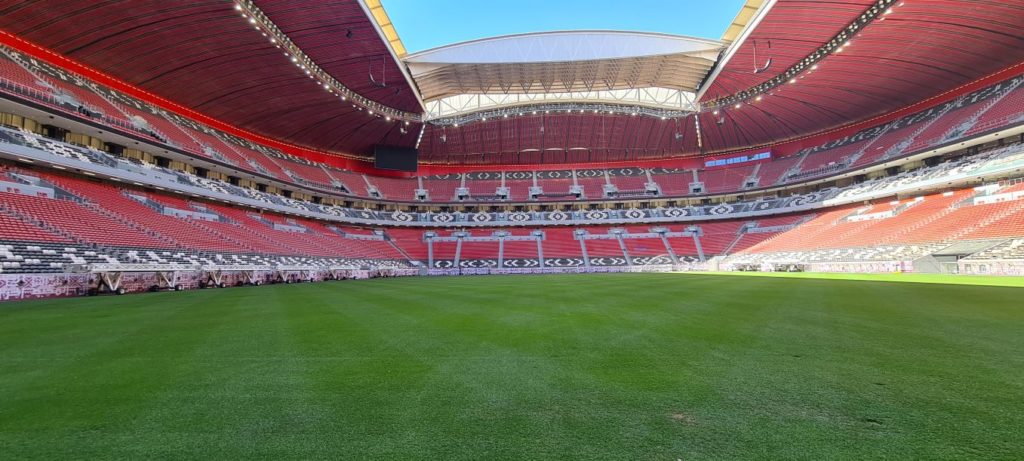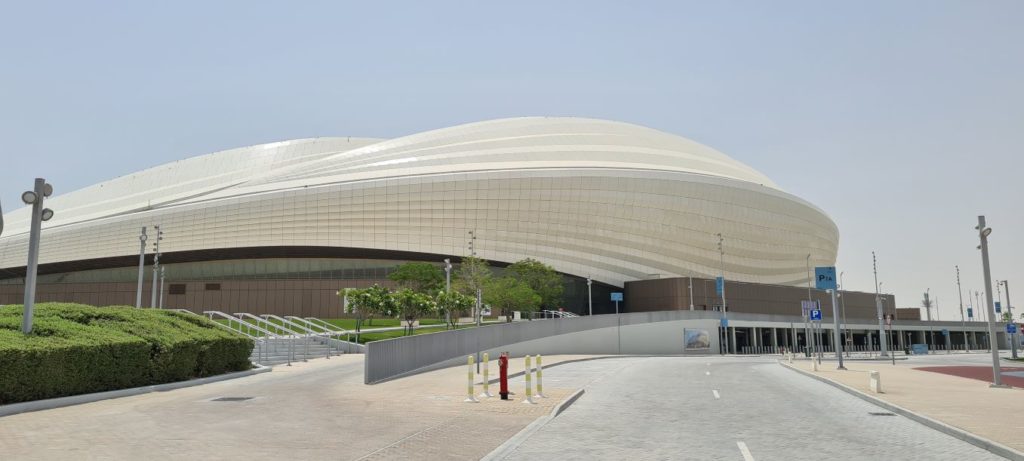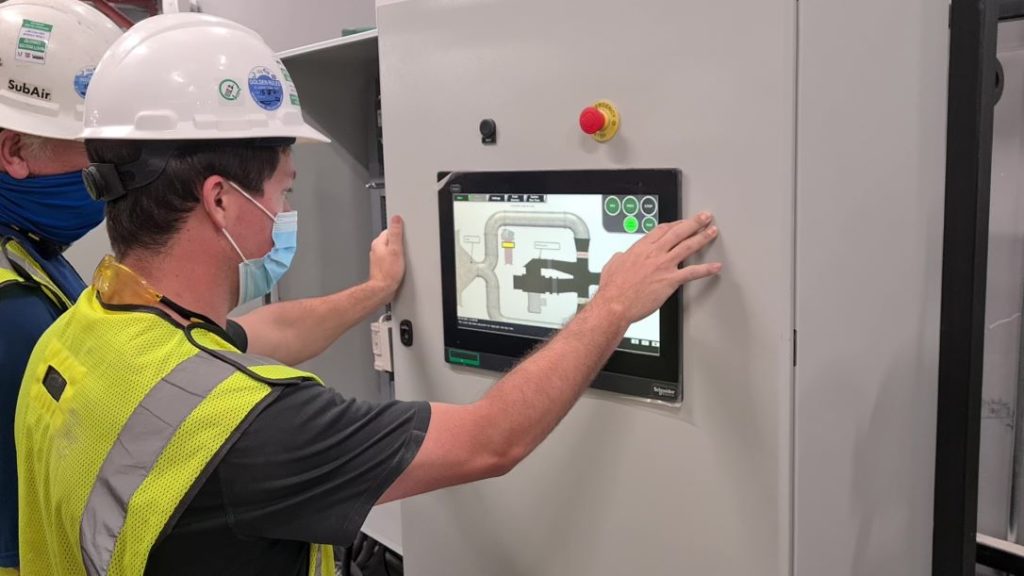The MLS season is beginning to reach its conclusion and, as such, attention is turning to the 2022 FIFA World Cup. While the tournament may not get going until mid-November, sights are now fully set on soccer’s flagship event. Quite rightly for a tournament of its magnitude, preparations have been taking place not only over the spring and summer, but for several years.
Bernhard and Company – in collaboration with SubAir Systems and Aspire Turf Management – has been responsible for providing turf management solutions for the 2022 FIFA World Cup. The World Cup venues are home to 11 sets of Bernhard and Company grinding machines, as well as SubAir Systems installed at all eight stadiums. These technologies are helping create beautiful playing surfaces that can stand up to the very highest levels of scrutiny on the world stage.
Steve Wilson, global business development manager at Bernhard Turf Technologies, and Trey Crabill, vice president of SubAir Systems, recently shared details about the planning processes, as well as the challenges that the teams have faced in preparing eight stadiums and 110 practice fields for the arrival of soccer’s greatest stars. They also explained why this World Cup may have come with the toughest challenge a maintenance crew has ever faced at a major global tournament.
“This World Cup is particularly unique, in the sense that there will only be eight stadiums used during the tournament,” said Wilson. “I believe this might be the fewest ever. For example, when the World Cup visited Russia in 2018, there were 12 stadiums used. So, there is around a 30-percent reduction in the amount of turf, which increases the stress levels on the grass significantly.
“That combination potentially makes it one of the toughest briefs ever received in terms of maintaining stadiums during a tournament. To provide some context, there are five or six stadiums that are hosting six matches over a 10-day period. This means that, on more than one occasion, they will host games on back-to-back days. That is not only extremely demanding from a logistics perspective, but also very demanding on the pitches that the players will perform on. In comparison, most Premier League stadiums in England, or other globally recognized stadia, might host a game once a week, or even less, on average.”
Added Wilson, “In order to deliver the best possible playing surfaces in each stadium, and on the 100-plus practice pitches, there has been a full turf management package installed, including a range of Bernhard and Company grinding machines, SubAir Systems, TurfBreeze fans, stitching, and supplementary grow lights. I genuinely believe that without the grinders, the team on the ground would not be able to pull this off with so many games in such a short window. With the significant number of matches and limited number of stadiums, it is critical that the grass is cut cleanly so that it becomes more resistant to wear.”
According to Wilson, the biggest wave of traffic over the pitches will be during the group stages of the tournament.
“Those two weeks are just crazy from a maintenance perspective, with games every other day,” he said. “With the grinders in place, we are going to be able to keep the mowers sharp and perfectly set, ensuring we give the grass a clean cut each time.”
SubAir Systems has also played a crucial role in helping to prepare the world-class pitches for the 2022 FIFA World Cup. Having the SubAir systems installed in the stadiums has allowed the maintenance crew to have total control over the rootzone of each pitch, without disrupting the surface. This means they have the ability to control the levels of moisture, oxygen, and gas transfer in the subsoil. In order to manage the rootzone without a system installed, the team would have had to aerate the pitches by punching holes in the surface.
“One of the challenges is ensuring that each pitch plays consistently,” said Crabill. “Even though the stadiums are in relatively close proximity, a variety of factors make each of these eight pitches their own individual organism. Each pitch will be in its own microclimate, which means, without a method by which you can control the pitches, they would each play differently.”
Crabill added that one reason SubAir Systems was chosen for the 2022 World Cup is that the system can be utilized differently at each stadium to ensure they are consistent.
“Our mission is to help provide a world-class experience for FIFA, the organizations involved, the players who take the pitch, and the fans either attending or watching around the globe,” said Crabill. “Organizers will be able to ensure that matches start on time, and athletes will be able to maximize their ability to play and compete on the safest, most consistent surfaces available. The technology suite (user interface, adaptive control, automatic response, pitch scheduler) of our systems are some of the key factors in accomplishing this mission. What that means is, no matter what changes there are in terms of weather conditions, the system will use live data derived from wireless sensors placed throughout the pitch to automatically maintain ideal pitch conditions.”
According to SubAir, one of the key takeaways from the preparation process has been the application of a counterforce, to gravity pulling water through the soil with the SubAir pressure mode. This enables the maintenance team to hold the correct level of moisture in the roots for much longer. By doing this, they are also able to save water by reducing the amount that is required on the pitch surface.
The extreme environment in Qatar has proven to be a useful test for SubAir. For example, one stadium uses the SubAir System because it’s coastal, and therefore suffers from salinity issues. So, the vacuum mode allows the stadium maintenance staff to pull the moisture through the soil, lowering the salt level. Even within stadiums that are just a few kilometers apart, there are a lot of unique requirements that will create fantastic case studies on how to better manage certain growing conditions.
“The pitches are in phenomenal shape, and with the healthiest turf possible, we are all set for a fantastic tournament where the playing surfaces will match the extreme high performance of the players,” said Wilson.
Article and photos provided by Bernhard and Company.





